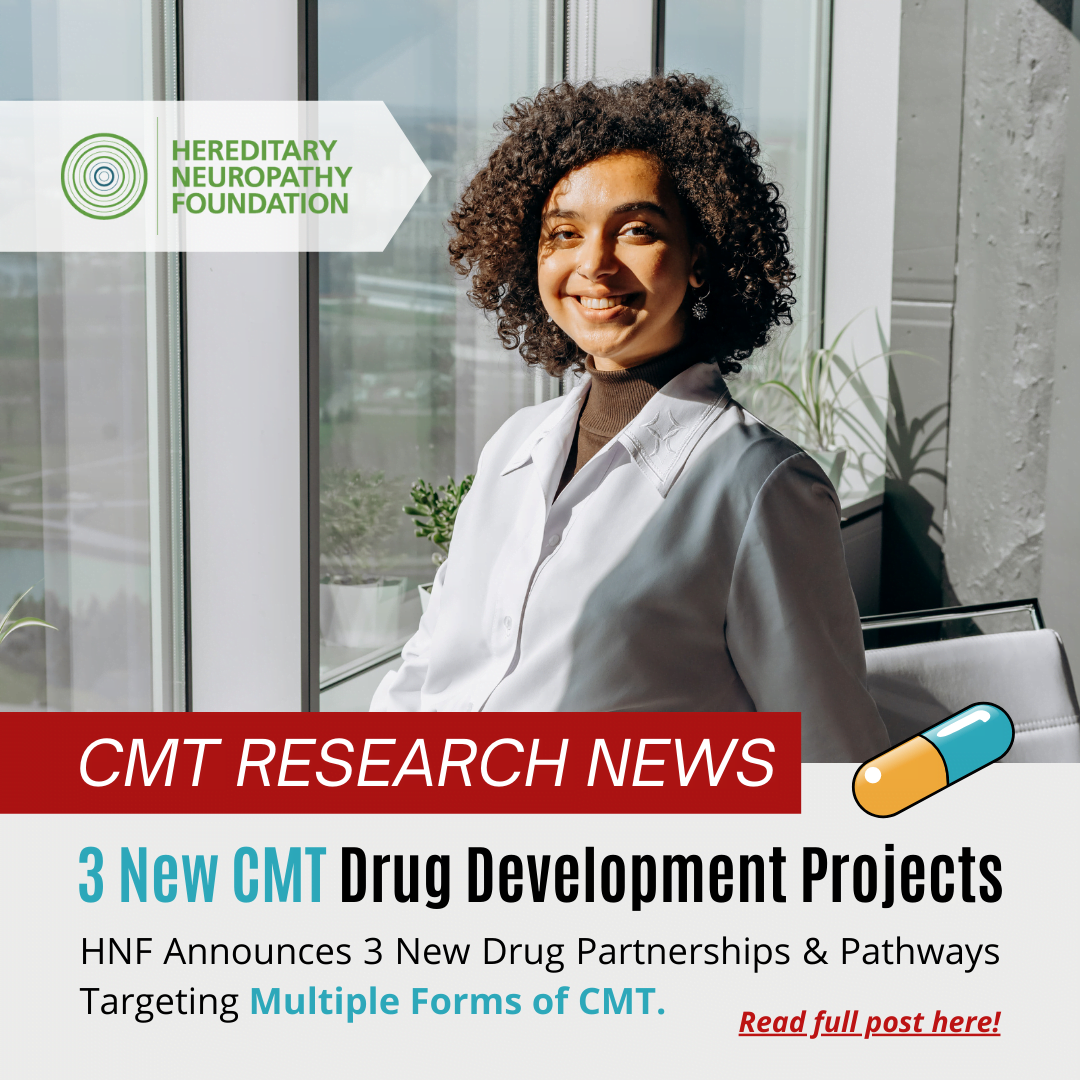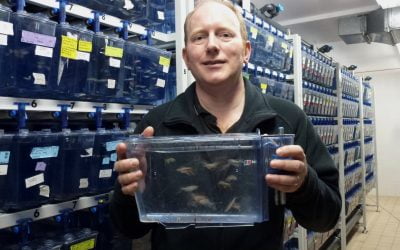3 New CMT Drug Development Projects
1. RAREBASE – REPURPOSING DRUGS
In partnership with Rarebase, HNF is leading the charge in the first-ever research initiative to tackle multiple types of CMT in one project. Rarebase is a public benefit biotech company focused on accelerating therapy development for rare diseases with its tech-enabled drug discovery platform called “Function”.
Rarebase will screen a compound library of thousands of FDA-approved drugs and novel drugs, targeting 10 mutations of CMT.
- CMT1A & HNPP (PMP22 dup & del)
- CMT2A (MFN2 & MFN2 w/ optic atrophy)
- CMT6 (Leigh’s Syndrome) (C12orf65)
- CNTNAP1
- CMT4A & CMT2K (GDAP1)
- SORD Deficiency
- CMT4J
- MTMR2
- PRX
- OPA1
Funding needed (Goal = $150k): HNF aims to develop additional human-derived cellular models for testing. To learn more and support the development of your subtype of CMT, contact [email protected].
2. NOVEL DRUG FOR MULTIPLE CMT TYPES HDAC6 Inhibitors –
HNF was the first advocacy group to fund research for the basic understanding of how HDAC inhibition impacts CMT2A by testing this class of drugs in animal models such as zebrafish and mice for validation.
Since 2014, HNF has invested $425,000 in HDAC6 inhibitors.
- The drug is currently being optimized for human trials and advancing to a pre-IND stage.
- Undisclosed Biotech Company, University of New Zealand, Burke Institute, and University of Sheffield.
For more on HDAC6 inhibitors, CLICK HERE
Funding needed (Goal = $250k):
HNF aims to test HDAC6 in cellular and animal models with other subtypes of CMT, such as CMT1A, CMT4A, CMT2K, and CMT6.
To learn more and support the development of your subtype of CMT, contact [email protected].
3. AUTOSOMAL DOMINANT OPTIC ATROPHY ADOA (OPA1)
In partnership with Fondazione per la Ricerca Biomedica Avanzata Onlus – Veneto Institute of Molecular Medicine – V.I.M.M., HNF was awarded a grant to accelerate the screening of FDA-approved drugs to identify small molecules that counteract axonal mitochondrial depletion in ADOA Retinal Ganglion Cells (RGC’s).
- Autosomal dominant optic atrophy (ADOA)-plus syndrome is a rare inherited neuropathy affecting the OPA1 gene that involves vision loss, weakness in the muscles that control eye movement (progressive external ophthalmoplegia), difficulty with balance and coordination (ataxia), hearing loss, disturbances in the nerves used for muscle movement and sensation (motor and sensory neuropathy), and muscle weakness (myopathy).
- HNF expects to have an initial progress report in mid-2022.
For more information, CLICK HERE ➜






My son has CMT TYPE 2C. it has affected his vocal odds, diagram and his hands and feet. He is very determined to have a normal life. He exercises every day, watches his weight. Are there any plans to research type 2C. Or anything else he should be doing?
Please make sure you JOIN the Global Registry for Inherited Neuropathies (GRIN).
Link: https://www.hnf-cure.org/registry/
I was diagnosed with HNPP at the age of 45… when my 6yr old was diagnosed… from genetics testing. She also has the autistic gene.